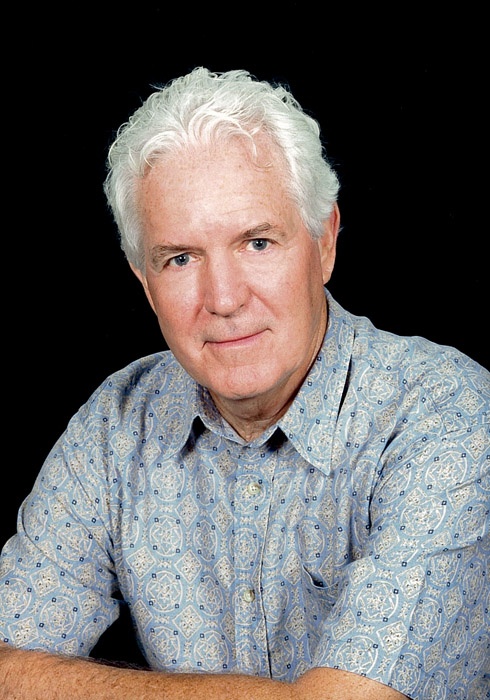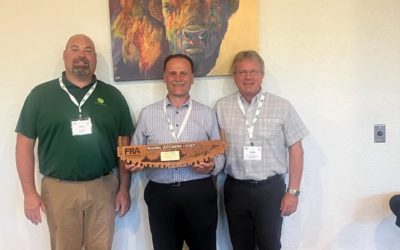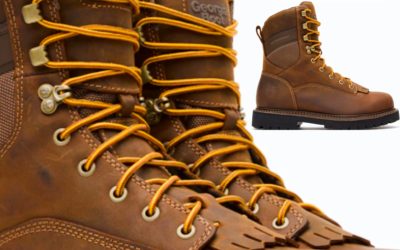What You Need To Know About DEF
Article by DK Knight, Executive Editor/Co-Publisher, Timber Harvesting January/February 2015
 Note: The following is the work of Josh Tovey, Tigercat Industries Service Engineer, as it basically appeared in a recent issue of Between The Branches, Tigercat’s customer-dealer publication. The article provides crucial, comprehensive and timely information about Diesel Exhaust Fluid, a product required by the new generation Tier 4f engines which began showing up in logging equipment in 2013.
Note: The following is the work of Josh Tovey, Tigercat Industries Service Engineer, as it basically appeared in a recent issue of Between The Branches, Tigercat’s customer-dealer publication. The article provides crucial, comprehensive and timely information about Diesel Exhaust Fluid, a product required by the new generation Tier 4f engines which began showing up in logging equipment in 2013.
All forestry equipment manufacturers are going through the growing pains and education process of dealing with Diesel Exhaust Fluid (DEF) as production of Tier 4f machines accelerates. This “new” fluid that invokes such concern has actually been used for some time, introduced commercially to on-road markets in 2004. (Tigercat introduced its first Tier 4f machine, a 620E skidder, in September 2013.) By providing proper education to dealers and customers, the introduction of additional models using DEF has had minimal impact to the end user.
Much like fuel, there are specifications and handling procedures that must be respected to ensure the complete system functions properly. Here are the basics that you need to know to be successful with DEF.
What is DEF? DEF is a clear mixture of chemical grade urea and demineralized water. Those familiar with the agricultural industry may be familiar with urea, which is a common nitrogen-based fertilizer. However, DEF is made with chemical grade urea, with strict limits on the amount and type of particles in the urea. TH Note: It is colorless, non-hazardous, and non-flamable. If DEF comes into contact with skin it can simply be washed off with water.
How does DEF work? The Environmental Protection Agency (EPA) regulates the amount of particulate matter and nitrogen oxide emissions an engine can produce. DEF is used in conjunction with a catalyst to lower nitrogen oxide emissions. DEF is injected into the exhaust stream, breaking down into ammonia and reacting with nitrogen oxide to form water and harmless nitrogen gas. This chemical reaction is most efficient at high temperatures. Extended idling (4 hours for Tier 4i, 9 for Tier 4f) or low load operations should be avoided where possible.
How much DEF does a machine use? DEF consumption is normally 6-8% of fuel consumption for Tigercat Tier 4f machines. In extreme applications it can be as high as 10%. The exact consumption depends on the machine model and some environmental conditions.
Where can you buy DEF? Most truck stops and gas stations stock DEF in 2.5 gallon disposable jugs with built-in spouts for the on-road market. Most truck stops sell it at the pump. DEF can also be purchased at various auto parts stores, as well as on-line. Make sure the seal is present and intact when the cap is removed. Contractors with large fleets may find the jugs impractical, preferring to buy and store in larger quantities. In this case, extra care must be taken to ensure that the excess volumes do not become contaminated. TH Note: The product is available in 1, 2.5 and 4 gallon jugs—the most expensive method on a per-gallon basis—and in 55 gallon drums and 275 or 330 gallon totes.
Which brand is recommended? All DEF must meet ISO 22241 specifications and be certified by the American Petroleum Institute (API). DEF should not be diluted with any other fluid, including water, or be used with any additives. Doing so risks adding chemical contamination into the system. Any product promoting low temperature DEF or additives should be avoided.
If you use DEF that does not meet required specifications, your machine may operate correctly for a short time, but minerals in low quality DEF will quickly build up in the after-treatment system, leading to an inevitable and costly failure. To put this in perspective, it only takes two teaspoons of oil to contaminate a 5,000 gallon tanker of DEF, according to reputable suppliers.
How much does DEF cost? Since the Tigercat FPT engines are more fuel-efficient than previous Tier 3 machines (and most competing Tier 4 machines), the cost of DEF is easily offset by reduced fuel consumption. The end user will not see any increase in operating costs by using DEF. TH Note: DEF is readily available for about $12 per 2.5 gallon jug—less when bought in bulk.
How do I store DEF? DEF has a defined shelf life that is temperature-dependent, and proper storage maximizes shelf life. DEF stored at 100°F (38°C) will last less than 90 days; stored at 80°F (27°C), it will last approximately 12 months. DEF that has expired will cause emission components to function incorrectly and limit the performance of the machine. Ideally, DEF should be stored between 23°F-68°F (-5°C and 20°C), which will result in a shelf life of up to 36 months. It should be stored out of direct sunlight and away from possible contaminates.
It is a good practice to understand how much DEF will be consumed and to maintain no more than a 90-day supply to avoid risks associated with expiration. It should only be stored in the original sealed container and should be stored to allow for first-in, first-out use. The manufacturing date should always be reviewed to ensure you are not purchasing or storing expired DEF.
What happens if DEF freezes? Freezing does not harm DEF. The freezing point is 12°F (-11°C) and it takes some time even at extreme cold to freeze completely. The DEF system is heated, both electrically and with engine coolant, so even if DEF freezes in-tank, the machine will thaw it. It is good practice to fill the tank after each shift, as the tank freezes from the outside in, it will keep liquid DEF near the suction line. Regardless, once the machine has been brought up to working temperature the thawing process is well underway and the operator should not be waiting for DEF to thaw.
How do I fill up the machine? The first and most important step in filling the DEF tank is to clean the area around the tank fill cap. Do not remove any of the strainers or filters in the system. This equipment is necessary to protect the system from contamination. Smaller disposable jugs of DEF have a built-in spout. If larger totes are used, a transfer container or pump system may be required. These should be constructed of a material suitable for DEF, such as stainless steel or polyethylene, including all fittings within the system. Do not use transfer containers that have previously stored other fluids or containers that are not specifically approved for DEF.
How do I service the DEF system? The most recurring issue observed in the field is contamination in the DEF tank. It cannot be stressed enough that dirt and debris must never enter the DEF tank. Large debris will plug the inlet of the suction strainer and small debris could damage the DEF pump and injector. There are multiple strainers and filters in the DEF system. However, this equipment will not protect the system if it has been removed or compromised.
Cleaning a DEF tank is not the easiest job and it is best to avoid contamination to begin with. If dirt or debris has made its way into the tank, only DEF or demineralized water should be used to clean the tank. Remember, chemical contamination damages the catalyst and is one of the biggest risks to the after-treatment system, so do not use brake cleaner or ether.
What happens if my machine runs out? Running out of DEF is actually quite a challenge. The DEF level, much like the fuel level, is displayed on the machine computer and multiple alarms are broadcast as the DEF level reaches 10% and below. As per EPA regulations, the machine will begin to lose power when 5% DEF level is reached and will continue to do so until the DEF tank is empty, at which point the machine is left to idle. This process takes hours. Full machine power can be restored by simply refilling the DEF tank.
With all of these suggested guidelines for using and handling DEF, it may seem like a lot to remember. However, with a bit of experience, it will all become second nature. With the use of high quality fuids that are stored correctly and kept free of particulate or chemical contamination, the DEF system will function flawlessly.
Latest News
PotlatchDeltic, Rayonier To Merge
PotlatchDeltic, Rayonier To Merge Rayonier, bringing its timberland real estate investment trust (REIT) to the table, and PotlatchDeltic, with its REIT and multiple wood products mills, have entered...
GLTPA Supports New Biorefinery Project
GLTPA Supports New Biorefinery Project The Great Lakes Timber Professionals Assn. (GLTPA) has voiced strong support for the Wisconsin Forestry Revitalization Bill, introduced by a trio of State...
Mark Turner Named FRA’s 2025 Western Region Outstanding Logger
Mark Turner Named FRA's 2025 Western Region Outstanding LoggerThe Forest Resources Assn. (FRA) and John Deere honored Turner Logging, Inc. as the 2025 Western Region Outstanding Logger award winner....
New From Georgia Boot: Core 37 9 in. Boot
New From Georgia Boot: Core 37 9 in. Boot The new Core 37 low heel logger is built for tough environments and all-day wear. The 9 in. full-grain leather upper offers rugged durability with classic...
WANT MORE CONTENT?
Spanning seven decades since its inception in 1952, Timber Harvesting highlights innovative and successful logging operations across the U.S. and around the world. Timber Harvesting also emphasizes new technology and provides the best marketing vehicle for the industry’s suppliers to reach the largest number of loggers in North America and beyond.
Call Us: 800.669.5613


